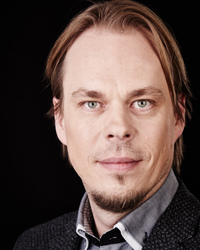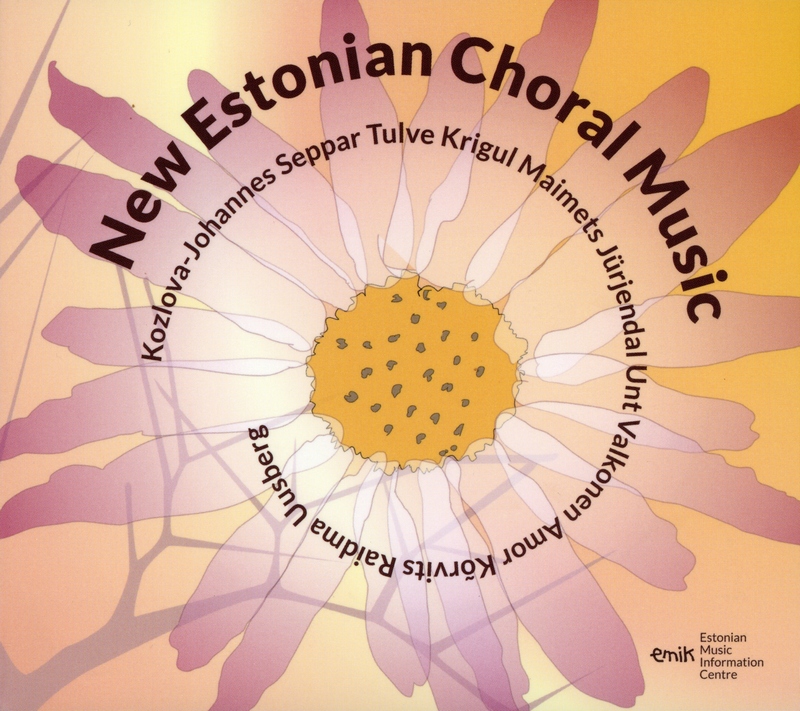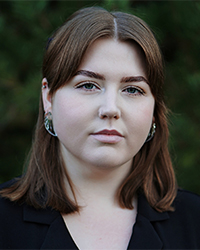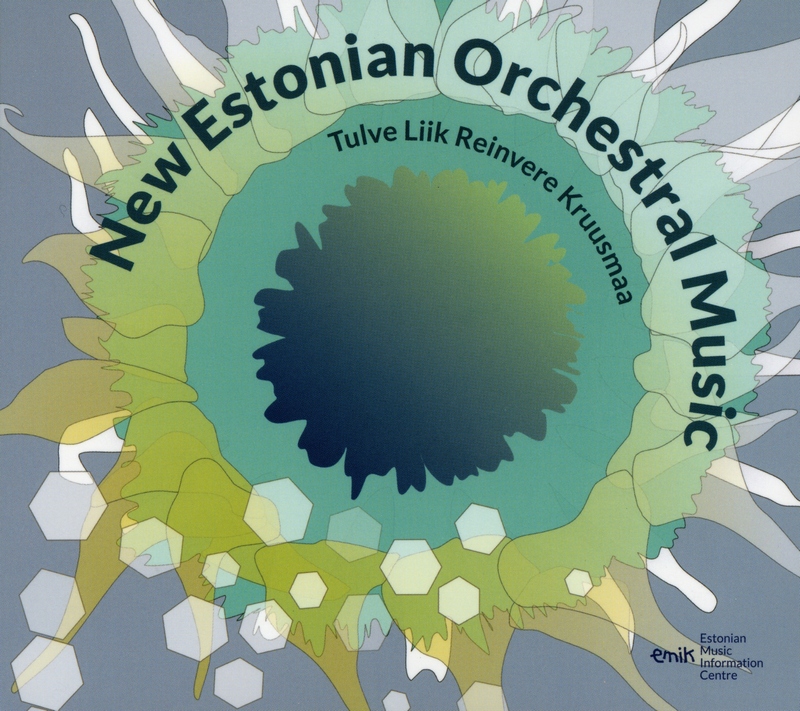As an appendix to my coverage of this year’s Estonian Music Days, i want to highlight three new anthologies of Estonian contemporary music. Focusing on chamber, choral and orchestral music respectively, and featuring a diverse collection of ensembles and vocal groups, they complement and expand upon a previous series of anthologies released five years ago. Both individually and taken together they provide a succinct overview of some of the best (and the rest) of what’s been going on in Estonian new music in recent years.

The chamber disc is the most qualitatively varied of the three. At the weaker end is Riho Esko Maimets‘ piano duo Sinikõrgustele (Infinite Blue Heights), a piece positively festooned with glitter and twiddles but lacking a strong sense of purpose, direction and substance. Andrus Kallastu‘s Tšellotroop (Cello Trope) is similarly hard to get a grip on, its hopping, halting demeanour creating music that sounds terminally fragmented and uncertain of itself. Even Liisa Hirsch, a composer usually guaranteed to provide something unusual and interesting, disappoints in her prepared piano piece Quantum Well, the single idea of which (involving slow-moving tremolando) soon starts to sound meagre and over-repetitive. Worst of all is Rasmus Puur‘s String Quartet No. 1 ‘Konstellatsioonid’ (Constellations), a bland, meandering slog through empty minimalistic waffle and blank sustained notes.
But these are the exceptions on an otherwise fascinating disc. Märt-Matis Lill‘s Kaljukits (Capricorn) is a piece i keep bouncing off, finding it all the more intriguing as i’ve contemplated how to find a way into it. That sounds like a negative, but the music’s emotional hints combined with the sense that everything we’re hearing is the product of a strict formula or process has kept me coming back to this piece. Though stylistically very different, Corde by Kristjan Kõrver is similarly disarming in its juxtaposition of material that veers between calm and a weird kind of ‘pushing’. It’s odd, but engagingly so.

One of the most striking and immediate works on the disc is Ardo Ran Varres‘ Apis mellifera, a piece for accordion, cello, live electronics and tape that takes both the sounds and the behaviour of the honey bee as its starting point. Filtered buzzing acts like something of a ‘pit stop’ for the players, who become animated and energised in response to its recurring presence. However, Varres also explores the droning quality of the bee, which becomes the basis for a lovely sequence combining acoustic and electronic sounds, a cello solo sitting in the midst of gentle floating tones. Likewise, the music also touches on the delicacy and dance-like aspects of the bee, though frantic activity returns at the work’s conclusion in an exciting split noisescape, with heavily filtered electronics adjacent to a busy closing duet.
The highlight is Nurgad (Corners), a sextet by Tatjana Kozlova-Johannes that sets out to explore electric guitars – three of which are played by members of the ensemble (cello and percussion double on electric guitar, piano on lap steel guitar). It’s a piece that, over time, makes one wonder whether its two primary aspects – loud accents and softer, sliding pitches – are actually connected at a fundamental level. They could be read in that way, the strange placid yet volatile music possibly an example of remaining focused in the midst of an insistent external force. The extent of this force becomes considerable, Kozlova-Johannes eventually letting loose a volley of accents like cannon blasts obliterating everything. Yet the aftermath demonstrates delicacy and gentle fortitude, transforming through soft rustlings into something darkly and powerfully lyrical.

The anthology of choral music is the only one of the three to not have any weak points at all, one of the reasons i included it in my Best Albums of 2021 list. As i mentioned there, quite apart from the fact that the country’s contemporary choral music is among the best i’ve heard anywhere (with equally superlative choirs), this disc includes a number of outstanding pieces that i’ve explored in some depth over the last few years. Tatjana Kozlova-Johannes’ To My End and To Its End was one of the first Estonian choral works to really blow me away, at its world première back in 2017. The recording on this disc is of that very same performance, wonderfully capturing its sublime dialogue combining intimidating darkness and stunning colour. Evelin Seppar’s evocative Seesama meri is also represented by the recording of its superb first performance, whereas Helena Tulve‘s masterpiece You and I, which i examined in 2018 via its world and national premières is here presented in a different performance given in Germany, presenting its exquisite intimacy and ravishing harmonies with better clarity than ever before.

In my Advent Calendar last year i featured a piece by Gerta Raidma, and the work of hers on this disc, ja me oleme valgusest tehtud (and we are made of light), is just as powerful in the way she fearlessly taps into deeply personal feelings and sentiments – here confronting the prospect of death and a floral new beginning – and manages to sublimate them. Maria Kõrvits‘s Akvarell III (Aquarelle III) moves between unison stillness and small-scale explosions of harmonic complexity, while Pärt Uusberg, a composer who usually wallows in the oversimplified and the saccharine, is heard in the refreshingly measured strophic solemnity of Et kiitke jumalat, kes on nii helde (Praise god, ye people, for he is generous).
As for the rest, i’m still getting my head around Ülo Krigul‘s Vesi ise (Water is) for choir and tape, a piece less about text than vocal atmospherics, in an understated yet wondrous 14-minute drama blending shafts of light with many more shades of much darker hues.

The orchestral anthology is the most focused of the three, featuring works by just four composers. It’s only let down by one of them, Alisson Kruusmaa‘s Justkui jõgi oleks laulnud… (As If a River Were Singing…), not so much a piano concerto as a 19-minute noodlefest for piano and orchestra. The more i hear of Kruusmaa’s music, the more i find it hard to understand her satisfaction with simply letting instruments burble and ramble at length, hoping in vain that the results might attain something approximating beauty or coherence. This piece attains neither, presenting nothing more than a facile, superficial shell containing a vacuum.

Jüri Reinvere’s Enne kui Leviaatan ärkab. Sümfoonilised märkmed (Before Leviathan Awakes. Symphonic Annotations), on the other hand, demonstrates a similarly engrossing attitude as in his orchestral music heard during this year’s Estonian Music Days. Understatement and restraint are again prominent characteristics, and while the title seems pretty specific, this four-movement piece is in fact narratively elusive. Furthermore, it’s not just the narrative that’s elusive, but also its primary ideas, Reinvere flirting with shifting forms of texture out of and within which we glimpse signs of something more tangible: a wavering tendril here, a quietly shining chord there. Numerous times, something climactic is suggested, even practically promised, but that’s clearly not what Reinvere has in mind, redirecting these portents of power toward altogether more mysterious ends. There are times when this persistently elusive quality can sound somewhat equivocal, but at its best – particularly through the short but arresting first movement – it’s a nicely effective counterpoint to the conventions of the more accessible end of contemporary orchestral music.
The other two works on the album are altogether more radical in nature and execution. Helena Tulve‘s cello concerto Tundmatuis vetes (In Uncharted Waters) takes an interesting approach in terms of the relationship between soloist and orchestra. Earlier on in the piece, the cello emphatically seems to be the instigator of things, its high open tremolandos the cause of stratified streaks in the strings, which later become strands that still appear to be led, guided by and emerging from the soloist’s material. It’s an implied air of authority that’s reinforced by the strength of the cello’s lyrical presence. Yet later, after the orchestra has become increasingly exercised and forceful, the soloist finds itself low in the mix, begging the question of to what extent it’s still the main force or whether it’s been partially absorbed. Far from answering that question, Tulve practically wipes out everything, passing through softness and strange shadows until everything becomes air.

Most exhilarating of all, though, is Liikumine võnkuvatel väljadel (Motion in Oscillating Fields) by Marianna Liik. The uncertainties manifesting in the works by Tulve and Reinvere here find their opposite in Liik’s demonstrative music. Which is not to suggest it lacks subtlety or variety; on the contrary, barely a couple of minutes in, the music has faded to almost nothing, just a few vestiges of strings and an occasional vibraphone note being all that remains. In what follows, Liik just lets the music be for a while, not pushing it at all, allowing possibilities of ideas to emerge but not yet giving them agency.
Yet this isn’t what typifies Liikumine võnkuvatel väljadel most. Liik clearly wants us to be caught up in the midst of this piece, throwing us in the deep end with an in medias res opening that immediately surrounds us in intense, tremulous density and pulsating electronics. And after that restrained, patient episode, she takes the music in the opposite direction, semitone clashes being a kind of false start for a huge eruption that flattens into full-blown noise. Within these passages of overload, it’s always possible to make out tiny details within, and it’s these that end up prevailing, coming out the other side in a gorgeous shimmer that blurs which sounds are acoustic or electronic. But there’s no sign in its closing moments that the energy has been used up, a burst of brief chatter yielding to sustained notes over a churning turbulence that, even as the piece ends, seems to be promising more to come.
All three of these CDs are available direct from the Estonian Music Information Centre’s online shop (no download or streaming options at present).
